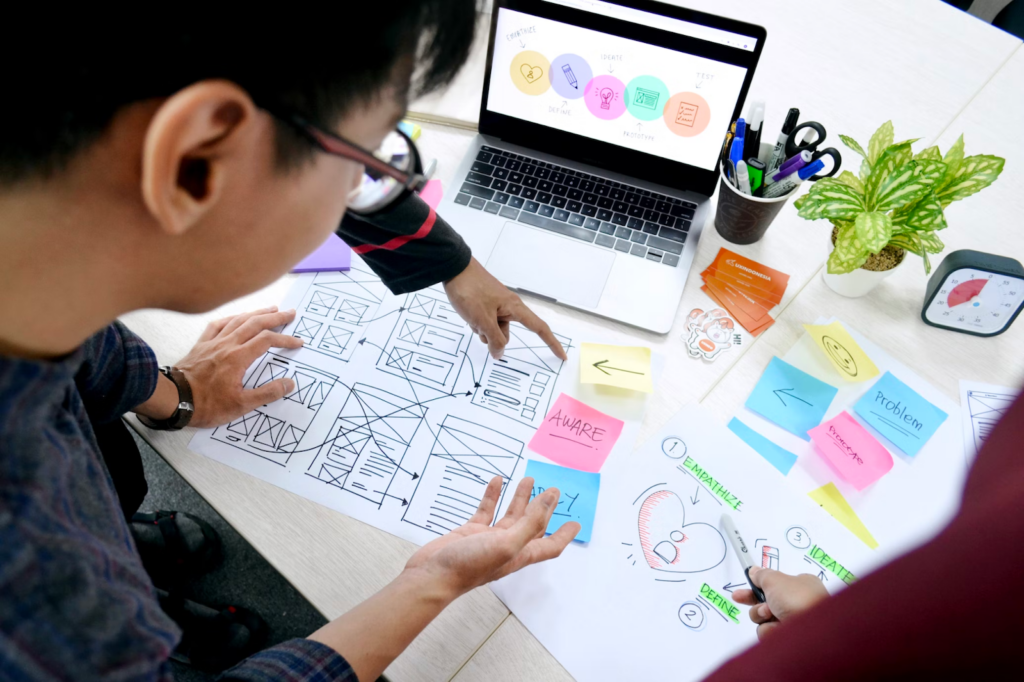A few tips for understanding customer barriers to user testing: a traditional company has been operating in a certain way for several years and already has its own processes that have already proven themselves. Changing things can then be difficult.
In France, we attach a lot of importance to performance and efficiency, which is why spending time doing research and user tests rather than delivering screens can seem like a lack of performance and a lack of tangible results.
You can then pass for incompetent not to deliver screens or worse pass for a scammer to your client. Because doing user tests can be a more or less long task depending on the users and the objectives set.
You must then leave your ego aside and make your client understand that he must do the same. Make him understand that only the user has the truth. The most difficult task of a UX Designer is to convince his client of this truth.
Here are the biggest barriers for customers to do user testing:
1- Fear of admitting the truth about one's product or even revealing flaws in the company's organization and product design.
Testing your product means exposing yourself to criticism. This may call into question the usefulness of his product. Because deep down, hearing the truth can hurt, especially when you haven't understood that feedback is part of the iteration process.
Redesigning your product can then seem tedious and expensive, but the money and time invested now will be less compared to the money lost after the development of the product if the expected results are not obtained.
2- Fear of wasting time and money for simple questions to which the customer himself had the answer. (Belief that the company knows its product better than its user)
From time to time, the customer already has his own ideas about what the design of his product is. For him, impossible to question that! His product is his baby and he wants to shape it in his image. He has surely already spoken about it to those around him and received a lot of praise for it. Questioning the product is now a completed phase in his mind.
The reality is that design is an iterative process that is never finished and the idea of a finished design is an illusion.
3- Belief that the user is sacred and should not be disturbed
Disturbing the user at the beginning of the design shows that the company does not know its own user!
A belief that many companies maintain.
These companies don't want to show their user something that isn't finished, and are even afraid of what their user might think of their company.
But the key is there, involving its users in the very design of the product improves the commitment and loyalty of its customers. Think about it: users will be happier with all their comments taken into account in the next update of your product than with a product that does not meet their expectations at all.
CONCLUSION
The UX design culture being still new in France, many companies have not yet integrated the importance of granting budget and time in this very important phase of the life of a product.
The role of a UX Designer is then to implement this culture in the company, to make it clear that ego and assumptions are no longer relevant. That delivering will be all the more effective once the feedback has been collected. That it's a long-term investment that will make everyone happy: the company will improve its performance and users will be more engaged.
Vincent QUERIC, UI-UX Designer @UX-Republic
Our next trainings
UX-DESIGN: THE FUNDAMENTALS # Paris
SMILE Paris
163 quay of Doctor Dervaux 92600 Asnières-sur-Seine
VISUAL THINKING: CONCRETE YOUR IDEAS # Paris
UX-REPUBLIC Paris
11 rue de Rome - 75008 Paris
DIGITAL ACCESSIBILITY AWARENESS #Paris
SMILE Paris
163 quay of Doctor Dervaux 92600 Asnières-sur-Seine
DIGITAL ACCESSIBILITY AWARENESS #Belgium
UX-REPUBLIC Belgium
12 avenue de Broqueville - 1150 Woluwe-Saint-Pierre
ACCESSIBLE UX/UI DESIGN # Paris
SMILE Paris
163 quay of Doctor Dervaux 92600 Asnières-sur-Seine
AWARENESS OF DIGITAL ECO-DESIGN # Belgium
UX-REPUBLIC Belgium
12 avenue de Broqueville - 1150 Woluwe-Saint-Pierre
STORYTELLING: THE ART OF CONVINCING # Paris
SMILE Paris
163 quay of Doctor Dervaux 92600 Asnières-sur-Seine
UX/UI ECO-DESIGN # Paris
SMILE Paris
163 quay of Doctor Dervaux 92600 Asnières-sur-Seine
DESIGN THINKING: CREATING INNOVATION # Belgium
UX-REPUBLIC Belgium
12 avenue de Broqueville - 1150 Woluwe-Saint-Pierre












